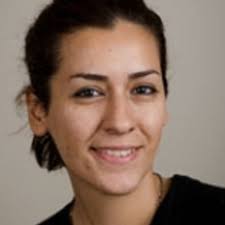BIO
I joined the PNT lab in 2018 as a postdoctoral research fellow specifically focusing on devising analytics tools using artificial intelligence, deep learning, and computer vision techniques to improve brain tumor patient’s care. My graduate work was related to the design and implementation of a biomedical texture analysis platform that uses ‘radiomics’ features for high-throughput generation of potential image-based biomarkers. Several of my publications demonstrated the potential application of radiomics features along with machine learning techniques in the diagnosis of breast cancer, head and neck cancers, as well as Alzheimer’s disease.
Outside of work I enjoy playing sand volleyball and pointless conversations about social issues.
EDUCATION
- Ph.D. Biomedical Informatics, Arizona State University – Dec 2017
- MSc. Biomedical Engineering, Amirkabir University of Technology (Tehran Polytechnic) — Sep 2010
- B.Sc. Biomedical Engineering, Amirkabir University of Technology (Tehran Polytechnic) — Sep 2007
APPOINTMENTS
- Postdoctoral Research Fellow in Mathematical Neurooncology, PNT Lab, Department of Neurosurgery, Mayo Clinic, Phoenix, Jan. 2018 – Present.
- Research Affiliate, Department of Radiology, Mayo Clinic, Scottsdale May 2016 – Sep. 2018.
- Graduate Research Assistant, Arizona State University, Aug 2012 – Dec 2017.
- Graduate Teaching Assistant, Arizona State University, Aug 2015 – May 2016.
- Software Developer, Parseh Intelligent Surgical Systems Co., Iran Jan 2009 – June 2012.
PEER-REVIEWED PUBLICATIONS
- Sara Ranjbar, Kyle W Singleton, Pamela R Jackson, Cassandra R Rickertsen, Scott A Whitmire, Kamala Clark-Swanson, J Ross Mitchell, Kristin R Swanson, Leland S Hu. A Deep Convolutional Neural Network for Annotation of Magnetic Resonance Imaging Sequence Types. J digital Imaging. In Press. 2019.
- Sara Ranjbar, Stefanie N Velgos, Amylou C Dueck, Yonas E Geda, and J Ross Mitchell. Brain MR radiomics to differentiate cognitive disorders. The Journal of neuropsychiatry and clinical neurosciences – appi-neuropsych, 2019.
- Sara Ranjbar and J Ross Mitchell. An introduction to radiomics: An evolving cornerstone of precision medicine. In Biomedical Texture Analysis: Fundamentals, Applications, Tools, and Challenges Ahead, chapter 8, pages 223–245. Elsevier, 2018.
- Bhavika K Patel, Sara Ranjbar, Teresa Wu, Barbara A Pockaj, Jing Li, Nan Zhang, Mark Lobbes, Bin Zhang, and J Ross Mitchell. Computer-aided diagnosis of contrast-enhanced spectral mammography: A feasibility study. European journal of radiology, 98:207–213, 2018.
- Sara Ranjbar, Shuluo Ning, Christine M Zwart, Christopher P Wood, Steven M Weindling, Teresa Wu, J Ross Mitchell, Jing Li, and Joseph M Hoxworth. Computed tomography-based texture analysis to determine human papillomavirus status of oropharyngeal squamous cell carcinoma. Journal of computer assisted tomography, 42(2):299–305, 2018.
- Shreya Ramkumar*, Sara Ranjbar*, Shuluo Ning, D Lal, Christine M Zwart, Christopher P Wood, SM Weindling, Teresa Wu, J Ross Mitchell, Jing Li, and Joseph M Hoxworth. MRI-based texture analysis to differentiate sinonasal squamous cell carcinoma from inverted papilloma. American Journal of Neuroradiology, 38(5) 1019–1025, 2017.
- Leland S Hu, Shuluo Ning, Jennifer M Eschbacher, Leslie C Baxter, Nathan Gaw, Sara Ranjbar, Jonathan Plasencia, Amylou C Dueck, Sen Peng, Kris A Smith, et al. Radiogenomics to characterize regional genetic heterogeneity in glioblastoma. Neuro-oncology, 19(1):128–137, 2016.
- Leland S Hu, Shuluo Ning, Jennifer M Eschbacher, Nathan Gaw, Amylou C Dueck, Kris A Smith, Peter Nakaji, Jonathan Plasencia, Sara Ranjbar, Stephen J Price, et al. Multi-parametric MRI and texture analysis to visualize spatial histologic heterogeneity and tumor extent in glioblastoma. PloS one, 10(11):e0141506, 2015
(*equal contribution)
PhD THESIS
Sara Ranjbar. Texture analysis platform for imaging biomarker research. https:://repository.asu.edu/ attachments/194153/content/Ranjbar_asu_0010E_17480.pdf, 2017. [Online; accessed 25-May-2018].

